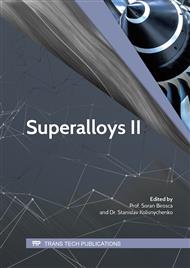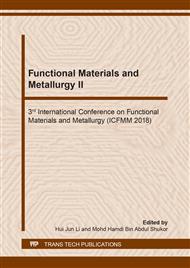p.92
p.98
p.104
p.113
p.119
p.124
p.129
p.137
p.143
Experimental Study of Cutting Performance for Inconel 718 Milling by Various Assisted Machining Techniques
Abstract:
The five stage experiments including without assistance, single and hybrid assisted machining systems on Inconel 718 milling were conducted in this study. First of all, the milling experiment without assistance was performed to investigate the variations of cutting performance and the results were used for a suitable process parameter planning in the subsequent stage experiments. Next, a laser assisted system was introduced in the second stage where the spacing distance between the laser spot and cutting-tool along the cutting direction was modified to test whether laser preheating may effectively reduce the cutting force. A biaxial ultrasonically assisted system with only one-axis oscillation (x or y direction) and with two-axis simultaneous oscillations (x and y directions) were subsequently introduced at the third to fourth stage experiments, respectively. While a biaxial ultrasonically and the laser assisted systems were integrated together to construct a hybrid assisted cutting system at the last stage experiment. Under these assistances, milling experiments of Inconel 718 by cutting-tool of tungsten carbide with nanoSi® coating were conducted. And the full-factorial experiments of process parameter combinations such as spindle speed, radial cutting depth and feed rate were planned. The results indicated that the laser-preheating assisted system could effectively reduce the cutting force as well as enhance the cutting performance. The effect of the biaxial ultrasonic oscillation on tool service life could greatly be promoted. Furthermore, the cutting performance exhibited in the integrated hybrid assisted milling prevails over that in milling without assistance as well as with each single assisted system. Under this hybrid assisted milling, the better surface roughness of 0.216μm was obtained under a combination of spindle speed of 6000 rpm, radial cutting depth of 0.01 mm, and feed rate of 300mm/min, accompanied by a maximum cutting-tool wear of 13.849μm.
Info:
Periodical:
Pages:
129-134
Citation:
Online since:
July 2019
Authors:
Price:
Сopyright:
© 2019 Trans Tech Publications Ltd. All Rights Reserved
Share:
Citation:



